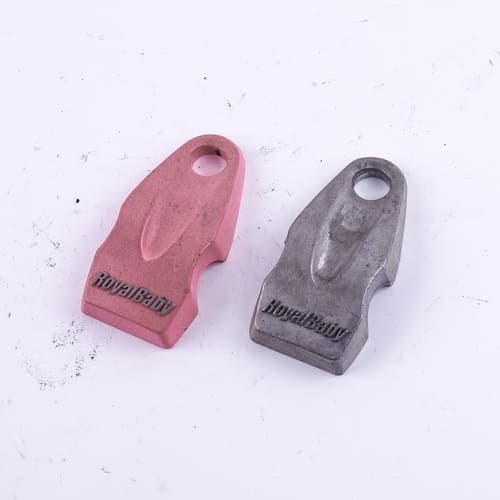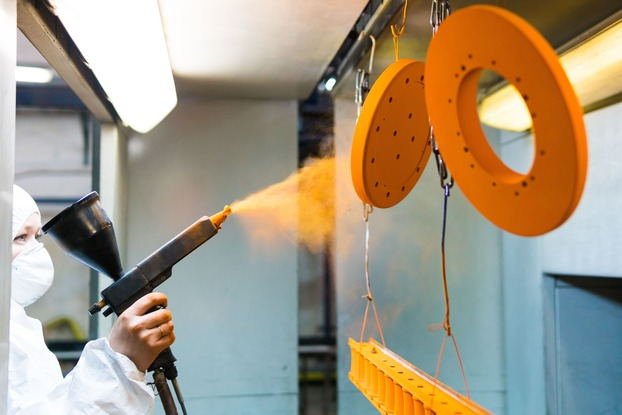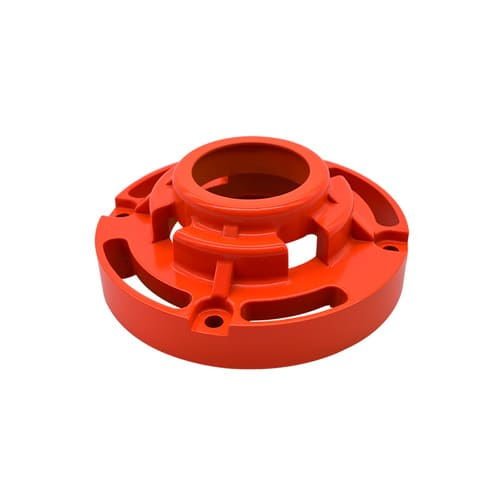Manufacturers (and indeed buyers too) want aluminium cast products that appear lustrous, shiny, and aesthetically pleasing. The way to achieve this is by surface treatment of the products.
Surface treatment is an essential process in aluminium casting. In this article, we will show you the different kinds of surface treatments you can apply to aluminium products.
Are you ready? Let’s go!
Why is surface treatment important?
Surface treatment refers to the alteration of a material’s surface to protect it and improve its aesthetics. It is also known as coating pre-treatment. It makes the metal receptive to paints, lacquers, inks and adhesives.
Surface treatment increases the surface energy level of the aluminium to make it easily adhere to painting or coating. It makes the aluminium more corrosion-resistant and also improves conductivity. It reduces the aluminium’s exposure to oxygen and humidity.

It creates a surface layer to protect aluminium against corrosive environment. This helps in decelerating the process of corrosion in aluminium. The lesser the corrosion, the more the durability of the aluminium.
Surface treatment increases the strength and resistance to wear of an aluminium product. When applied, surface treatment improves the hardness of the aluminium. Thereby, it makes the aluminium more durable.
You can use chromium nitride (CrN) for thermal spray coating treatment. For complex surface treatment, you can use the Nickel-Chromium-Boron (NiCrB).
The different types of surface treatments that can be done on aluminium products
The common surface treatments usually done on aluminium products include the following:
(1.) Anodizing
This is an electrolytic process for producing thick and natural oxide layer on aluminium. This increases the thickness of the aluminium. The layer develops as a protective layer in the aluminium. It is usually between 5-30um in thickness.
The aluminium oxide is not fixed to the surface of the plating. Rather, it is fully integrated with the underlying aluminium substrate. So, anodized aluminium do not flake or peel off.

In anodizing, no ‘new’ layer is added to aluminium. Rather, an already existing aluminium is built up as a protective layer. Note that before anodizing, the aluminium is pretreated. Pretreatment includes chemical treatments (such as electrolytic polishing), abrasive polishing, etc.
To anodize:
• Immerse the aluminium into an acid electrolyte bath and then pass an electric current through it. There are different types of electrolyte solutions used in anodizing.
However, the commonest ones include the 10% chromic acid at 38-42°C, a mixture of sulphuric acid and oxalic acid at 30°C, and a 10+15% solution of sulphuric acid at 25°C. They have a film formation rate of approximately 15um/he, 30um/he, and 25um/hr.

• Mount a cathode to the inner part of the anodizing tank.
Thereafter, oxygen ions will be released from the electrolyte. This will combine with the aluminium atoms at the surface of the part being anodized.
Anodizing improves the decorative value of aluminium. After anodizing, the aluminium will retain its unique metal character while also acquiring a pleasant aesthetic. It is easy to maintain anodized aluminium. You can easily clean them with mild soap and water.
(2.) Powder Coating
The powder coating is applied by an electrostatic process. It involves the following processes:
• The materials needed include polymer resin systems, levelling agents, cavities, flow modifiers, etc. All these will be mixed, cooled and ground into a powder form. This is the negatively charged powder. It needs an electric charge.
• You will then apply the negatively charged powder to the (positively charged) aluminium products. Pre-heat the aluminium before applying the powder. This will enhance uniform finishing.

The process used in applying the powder to the aluminium product is the Electrostatic Spray Deposition (ESD). The ESD involves using an electrostatic paint sprayer to impact a positive electronic charge on the powder. This accelerates the powder towards the aluminium through electrostatic charge.
• After applying the powder to the aluminium, this will result in electrostatic effect. This creates a temporary adhesion of the coating.
• Using a cure oven, heat the aluminium product. This will cause the coating to melt and flow.
• After getting cured, the aluminium and the coating will connect. Note that in powder coating, there is no need to apply any solvent.

Also, when solidified, you can add additional layers to make the aluminium products thicker. The thicker the coating, the more durable the aluminium.
Powder coating offers durable finishing to aluminium products. Powder-coated aluminium are not susceptible to moisture, chemicals, ultraviolet light, and other intense environmental conditions. They are also not prone to corrosion, chipping, abrasions, fading, etc.
(3.) Wet Paint
It is a process in which liquid paint is mixed and fed through an air gun. It uses compressed air to atomize and direct the paint particles onto the aluminium product. After spraying, the paint dries on its own. You don’t need to heat it and it doesn’t need an oven.
The painting is often done in layers. The primer layer is a heat-cured epoxy paint. The top layer is usually acrylic or polyurethane.

For wet paint, you can apply decorative effects that cannot be applied in powder coating. You can also blend various colours when painting. This gives more lustre to aluminium products
When painting, you don’t need to consider the dimensional limit. So, it is suitable for the surface treatment of large aluminium parts. It is also cost-effective.
The coating of wet paints are thicker than that of powder coating.
(4.) Electroplating
This involves forming thin coatings on the substrate of the aluminium products through electrolysis. It is immersing aluminium products into an electrolytic solution; and introducing electric current to deposit dissolved ions of another metal unto the surface.

When the electrical current flows, there is a movement of molecules from the positively charged to the negatively charged metal.
The aluminium is coated in a low reactive metal. So, it becomes resistant to corrosion. The aluminium also becomes stronger against shocks and impact. Electroplating similarly helps to increase aluminium adhesion.
(5.) Chemical Film
This is also known as Alodine, Iridite or chromate conversion coating. It is a chemical conversion coating in which you apply chrome to aluminium.
Before applying it, remove all grease, dust and oil from the aluminium product. This will enable the coating chemicals to evenly coat the aluminium surface. You can clean with alkaline and water detergents.

Also, apply an acid or alkaline etch. This is to remove alloying elements that may obstruct the conversion coating reaction. Don’t over-etch the aluminium though. You can then apply the coating to the aluminium product. You can apply it by dipping, spraying or brushing it.
Chemical film has a thin and almost immeasurable coating. So, it does not alter the dimensions of the aluminium.
It is easy to recognize chromate conversion coatings by their green-yellow colour. The different types of chemical Film include AMS-2473 & 2474, M-C-817 06, MIL-DTL-554, and AMS-C-554.
Conclusion
In this article, we have highlighted and explained the main methods of surface treatment that can be done on aluminium products. These include anodizing, powder coating, wet paint, electroplating and chemical film. Other methods of surface treatment include hot dipping, vacuum painting, and nitriding treatment.








